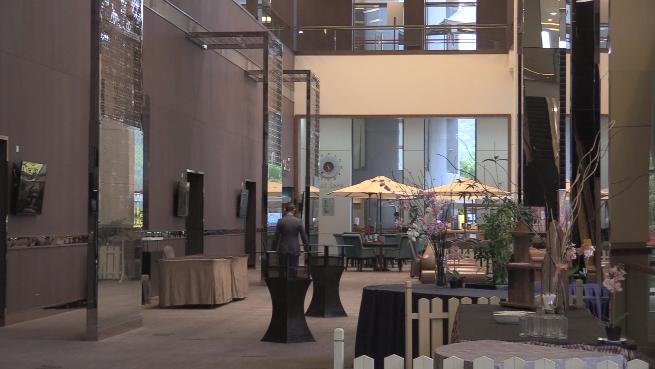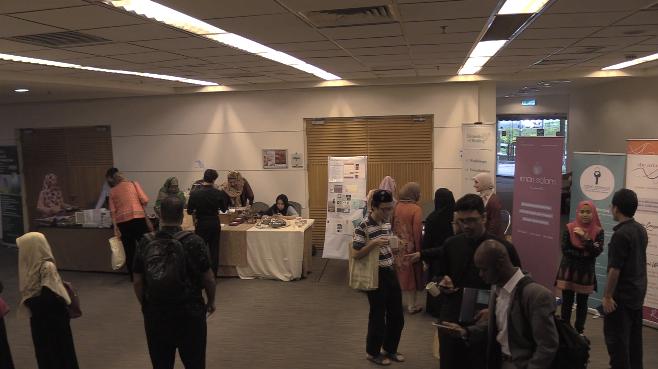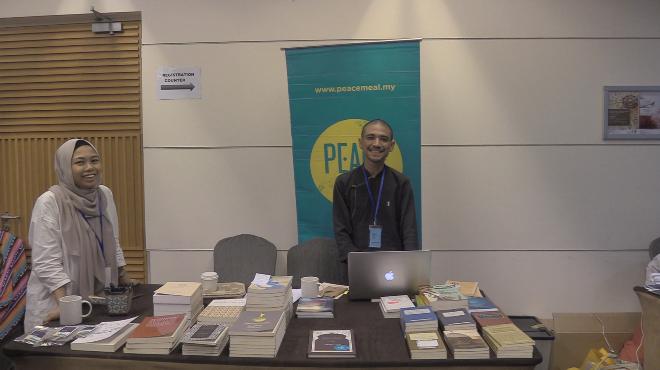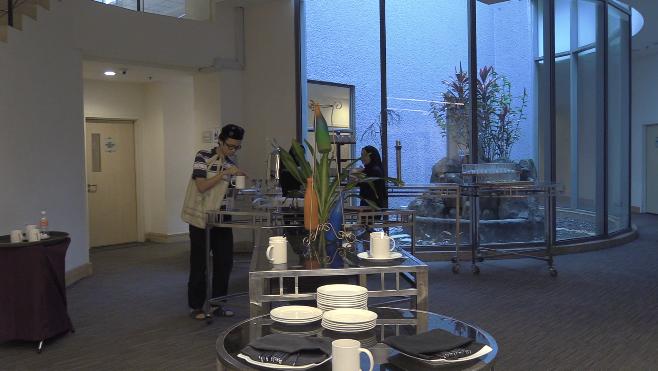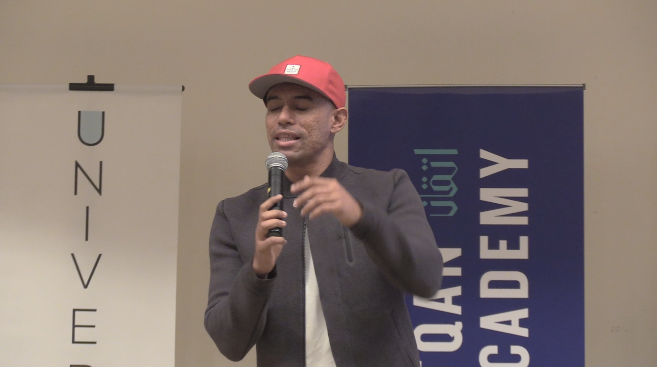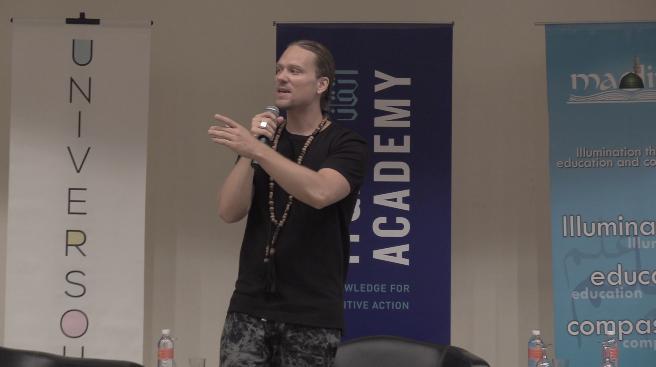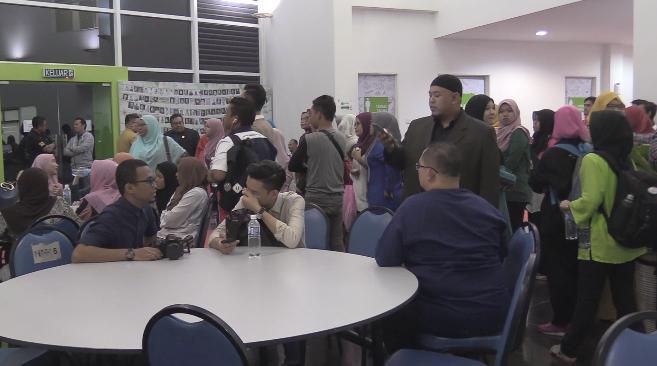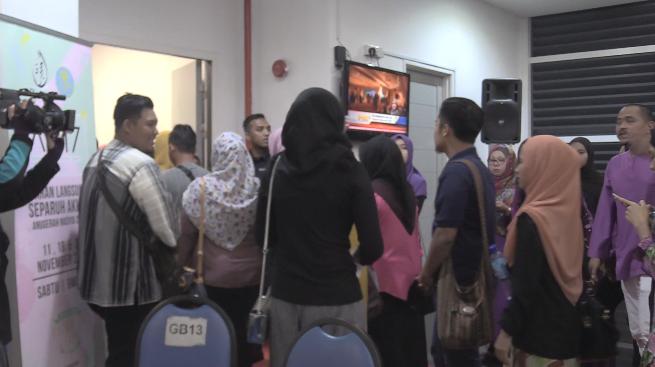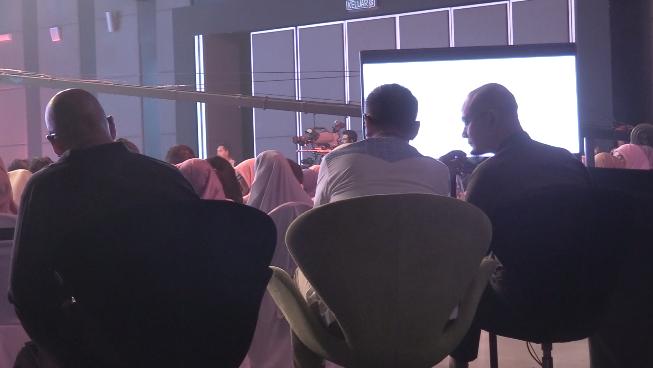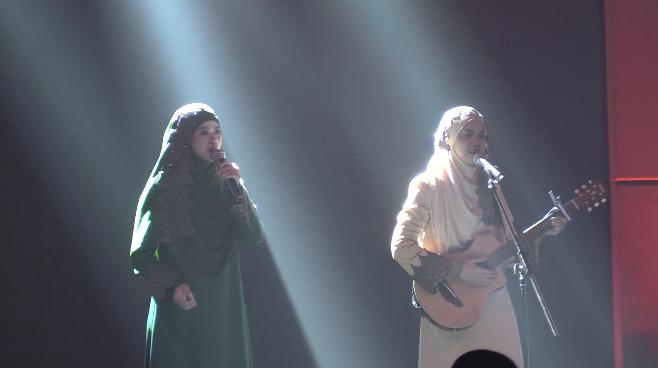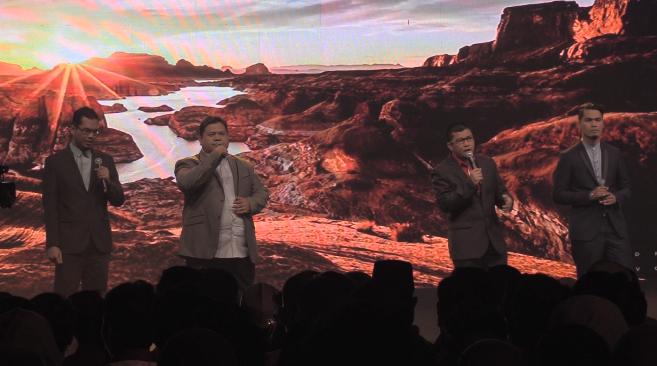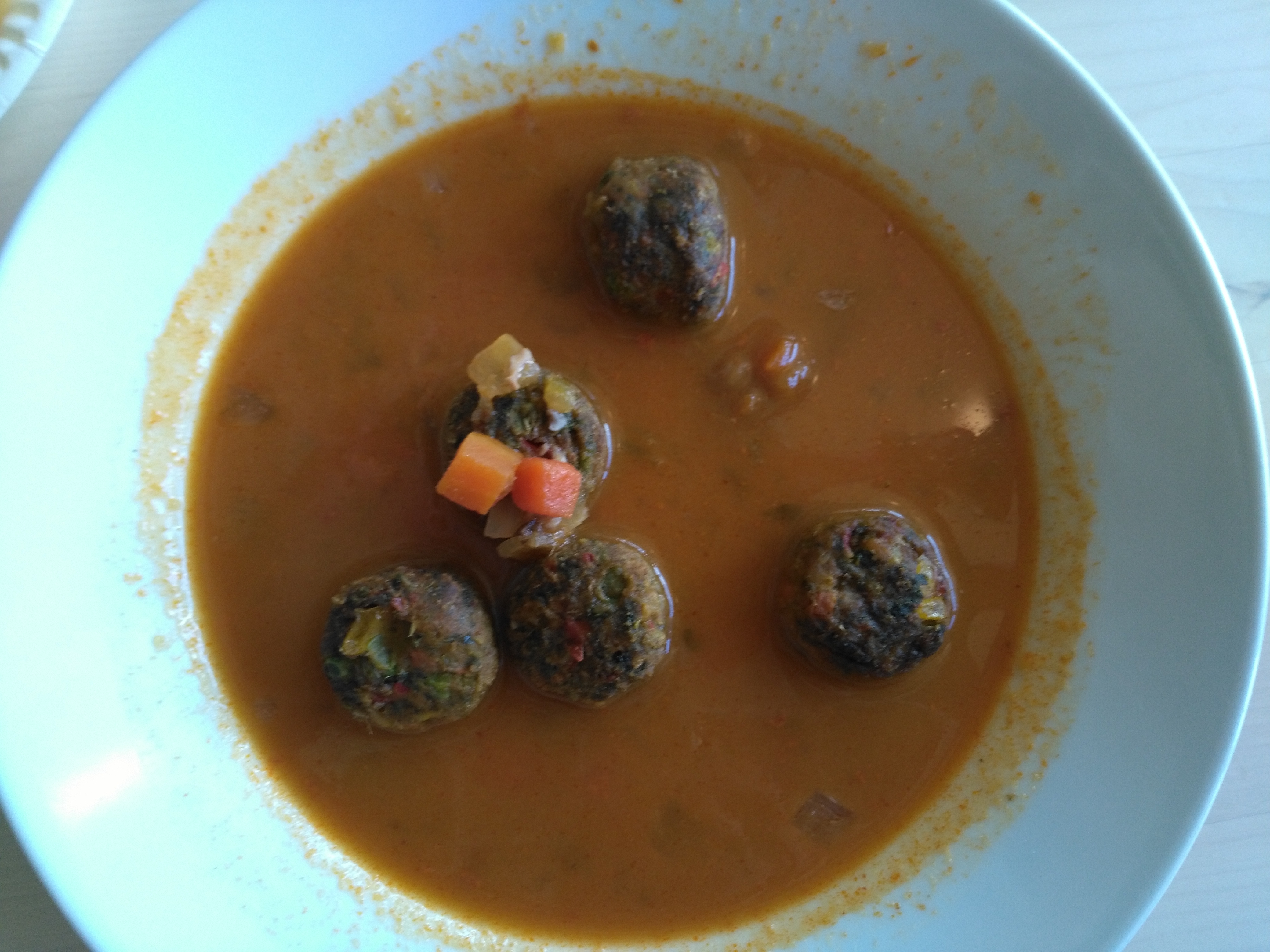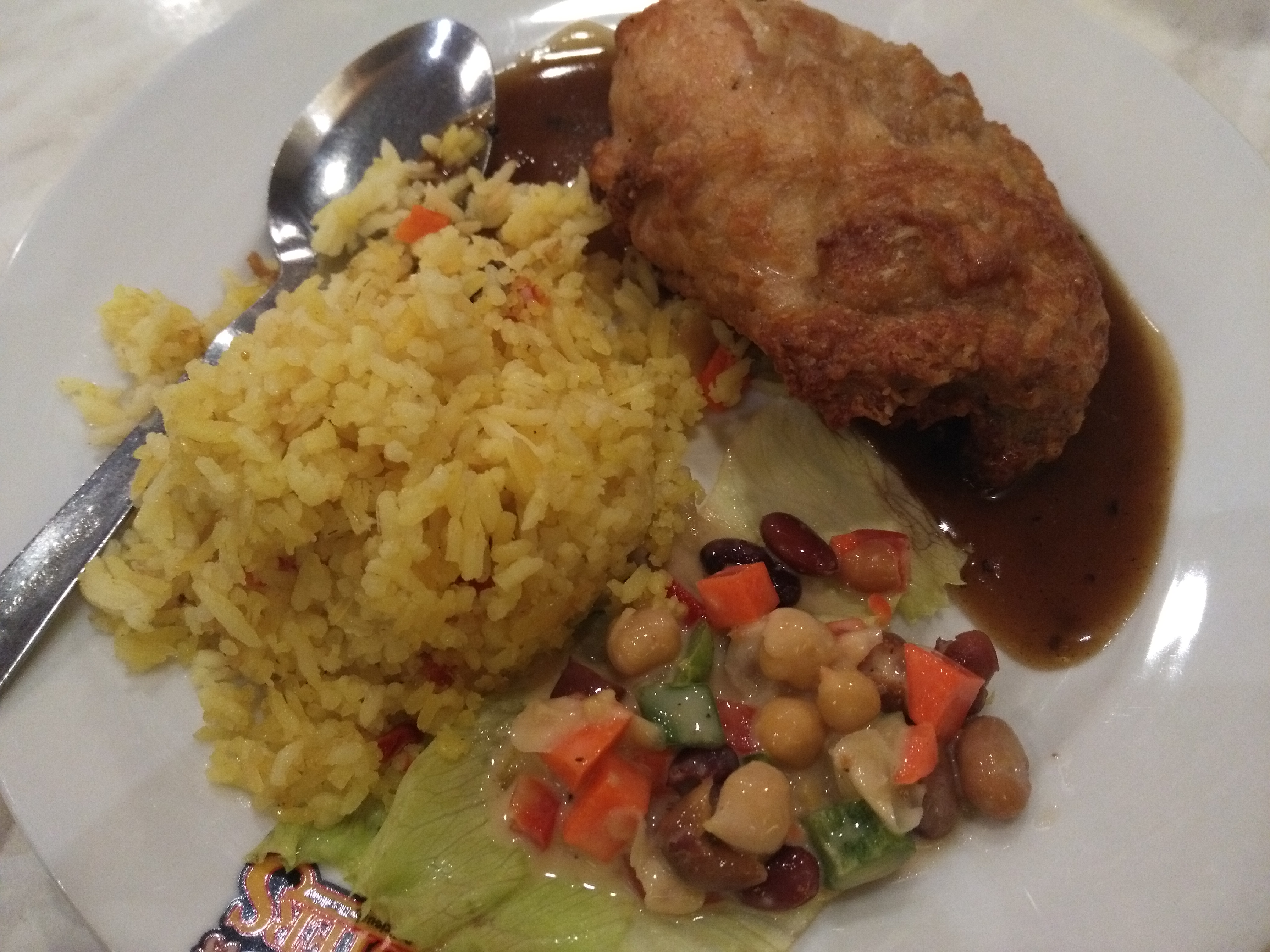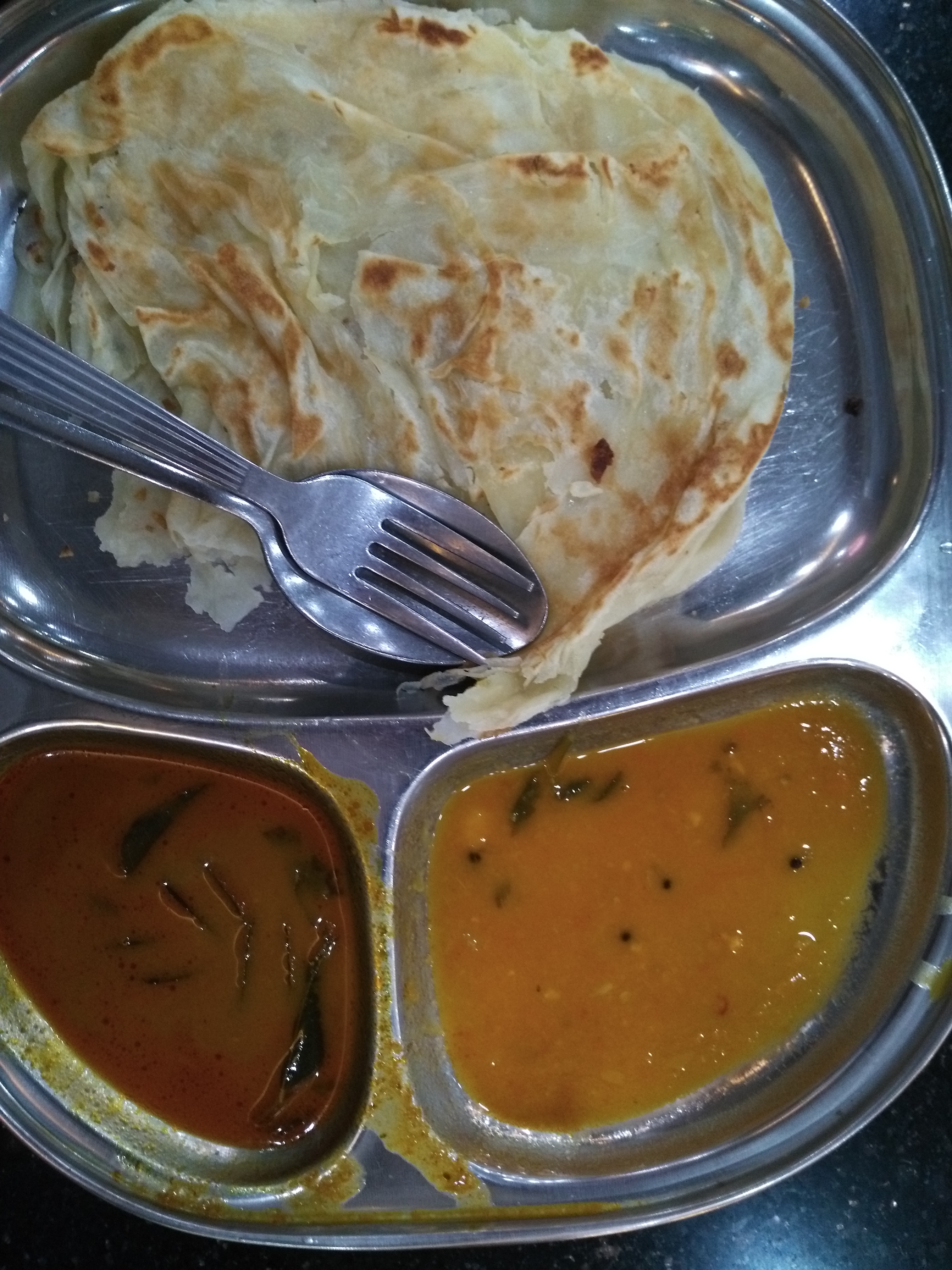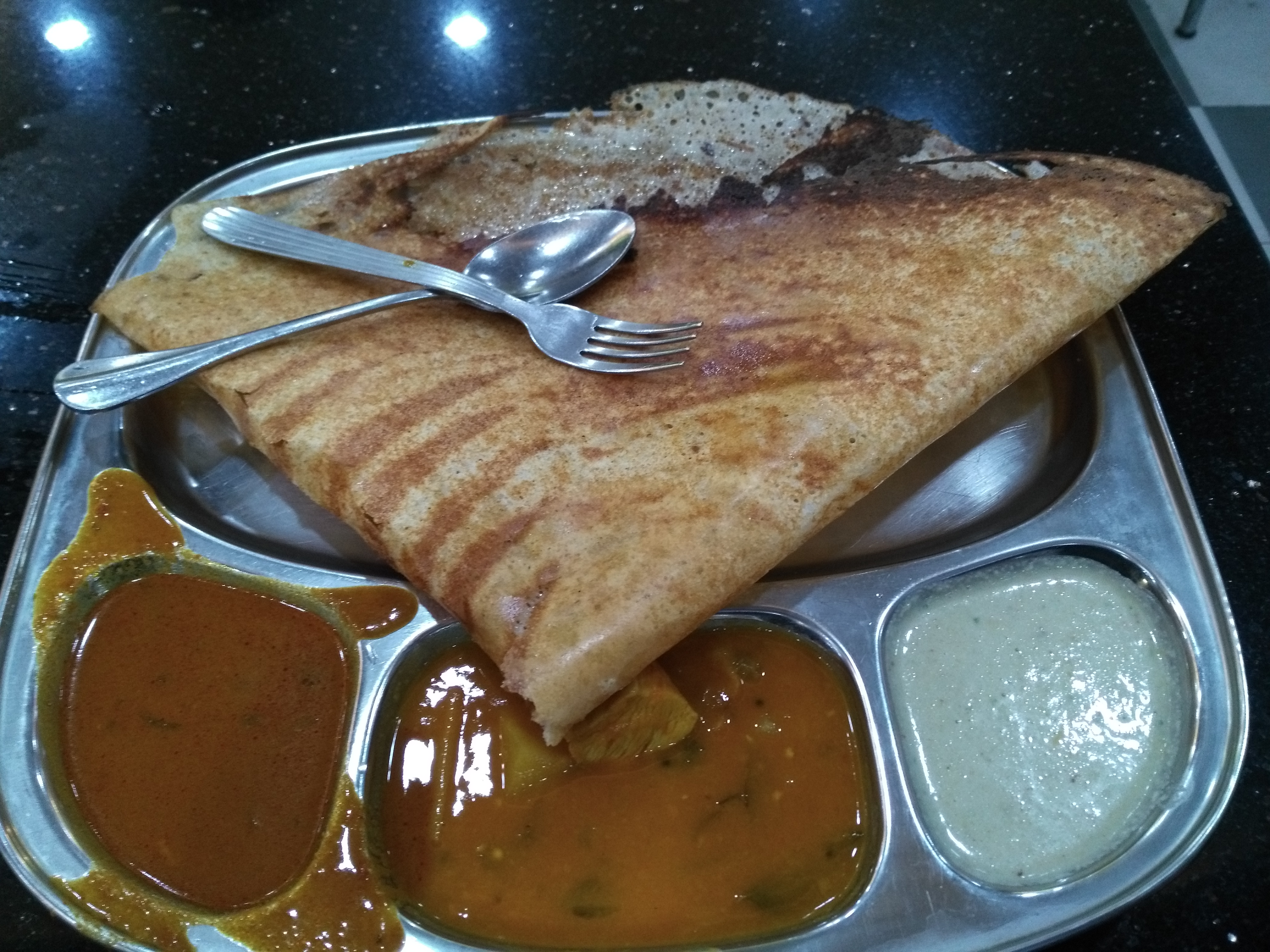Nasyeed Vocal Semi-Finals
19 Nov 2017
Reading time ~34 minutes
I can safely say that I do not go a single week on this Watson fellowship without having done or participated in something remarkable that I had yet to do or participate in in before. Usually, each week throws multiple new gadgets and phenomenons my way to process in the speed of light. I have not made this very explicit in my previous posts, but I thought I should mention that this week, I sat in the studio of TV Alhijrah to witness the semi-final round of the annual nasyeed vocal competition hosted and televised by TV Alhijrah. I got to clap to the alerting of prompters indicating the ends of commercial breaks, just in time for the next contestant in the mammoth, blinged-out “Alhijrah Big Studio” in Cyberjaya.
Interviews
Before getting into the nasyeed competition (more below), let’s get the routine interview commentary out of the way.
Adeep Nahar and Fuad Ko

My first duo of interviews for the week was with Adeep Nahar and Fuad Ko, both performers at SimplyIslam’s Maulid Music Festival described in my last post. Both Adeep and Fuad are Muslim and full time musicians in their thirties, engaging in a variety of music-related endeavors including teaching, producing, and performing music. Adeep got into more of his own background than Fuad, relating his history of drug and alcohol abuse while hooked on music by the likes of 2-Pac, Wu-Tang Clan, Wiz Khalifa, and Busta Rhymes. After struggling with this lifestyle, Adeep engaged in a formative process of “mencari diri” which translates to “finding yourself”. After this process, Adeep’s musical output has been more so, though not entirely, religiously inflected. This is particularly true of his group, Caravan of Praise. Fuad’s music is also at times explicitly religious, but what’s most relevant is the fact that both musicians are Muslim.
What Adeep and Fuad had to say about their rather conflict and/or sin ridden pasts was really compelling to me. Given that God’s is all knowing of our past, present, and future, Adeep claims that there is really no coincidence in life. He’s had to go through a massive amount of questionable life experiences to arrive at the relationship that he now has with God. Reflecting on this, Adeep mentioned just how important it was for him to fall and then rise up again from sin. He even went so far as to suggest that human beings are meant to stray from the right path and come back as much as they possibly can. If all human beings were suddenly absolutely sinless, perfect creatures, Adeep said, jokingly, that there would be no need for God’s judgement and Hell. In other words, there would be no need for human life on Earth, given that life is a test for God to weed out the good from the bad.
Adeep also argued that one’s musical abilities are nothing less than a gift from God. Keeping this gift to oneself, i.e. not sharing, is not only selfish in their view, but implicitly a rejection of the talent that God has given them. Adeep made it especially clear that all he can do in life is sing. He cannot play guitar or keyboards or cannot be a productive member of society in most other ways for that matter. It is thus especially clear to him that he should make use of his voice for his own sustenance as well as the betterment of society.
Fuad centered on God’s mandates for human beings to engage in ihsan, which, among several conceptions, is a divine obligation to strive for goodness and excellence in one’s deeds, actions, and social interactions propelled by inner faith and religiosity. In Fuad’s view, a Muslim musician who enagages in ihsan is someone who excels in their works and undoubtedly believes that God watches over all the one does. I can personally vouch for the fact that Fuad gives his all when it comes to music. His commitment to his craft, as well as Adeep’s, is highly motivational. Fuad believes that insofar as musicians are able to fulfill their divine obligations to provide for their families, live personal and musical lives within the boundaries of shariah, and strengthen, inspire, assuage, and entertain people with their music, all things musical are fair game.
Sheikh Abdul Kareem Said Khadaeid
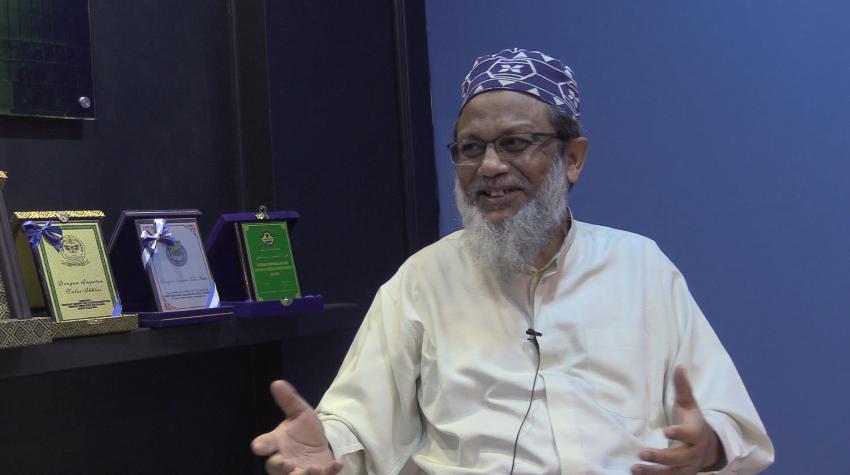
My second interview of the week was with Sheikh Abdul Kareem Said Khadaeid, a spokesperson for the umbrella organization Gabungan Angkatan Melayu Islam Nusantara (The Malay Islamic Nusantara Association), aka. Amin. The organization’s website describes itself as a group of Islamic NGO’s that jointly deal with culture, da’wah (religious propagation), legislation, human rights, history and heritage, youth, welfare, Islamic orders, and more. Amin promotes Ahlus Sunnah Wal Jama’ah (Sunni Islam) as opposed to alternative ideologies which they deem to be “deviant” or “extremist” such as Hizb ut-Tahrir, Wahhabism, Shia Islam, liberalism, secularism, etc. Abdul Kareem Said is also an adherant of the Naqshbandi tariqa (spiritual order), similar to the SimplyIslam people and many of the Maulid Music fest organizers mentioned in last week’s post.
Sheikh Kareem did not attend traditional Islamic school during his primary and secondary schooling days, but he and his family had been involved in a Sufi organization for as long as he could remember. Though neither of his parents are musically inclined, he fed his knack for Western European Classical music, jazz, rock, and more during his youth. While in college, he would help organize musical events inspired by the musical surplus of the Woodstock era. However, he started to question his lifestyle choices including his knack for music after hitting a deep depression in 1995. Help seemed out of sight until he got wind of a dhikr session lasting upwards four hours near the tail end of his depression. Sheikh Kareem tells me that soon after attending this event, he virtually gave up listening to music, and subsequently led a much more healthy and positive lifestyle. After this turning point, Sheikh Kareem grew interested in researching music history and music’s affects on the brain and mind. He grew especially concerned about the darker aspects of famous musicians’ lifestyles after studying the biographies of several well-esteemed musical acts from throughout history including Strauss, Chopin, Black Sabbath, BB King, Little Richard, Janis Joplin, and Ella Fitzgerald among others. Sheikh Kareem claims that even though the professional musician/entertainer lifestyle was not the ultimate downfall of the health or wealth of each of these massive names, Sheikh Kareem contends that their pursuits of music making and listening is linked with the depression and tragedies that visited the lives of these musicians/musical acts. Sheikh Kareem was especially concerned with the alleged engagements of famous celebrities such as Lady Gaga and Sammy Davis Jr. with alternative forms of spirituality and witchcraft, both extraordinarily dangerous in the view of adherants of Sunni Islam. Sheikh Kareem holds that the industrial machine that churns out music en masse today only exacerbates ungodliness and general negativity in the lifestyles of prominent entertainers. He characterized the damage done to prominent entertainers of our day and in previous times as collateral damage of this industrial machine that seeks nothing but a maximization of profits. He went so far as to contend that the beneficiaries of this machine were overwhelmingly “Kazakh Jews”. I haven’t had the time to look further into this accusation, but this statement was clearly tinged with anti-semetic conspiratorial fervor. All in all, Sheikh Kareem is now of the view that all musical instruments are haram except for certain percussive instruments such as the daf to accompany singing only for explicitly religious contexts.
After our discussion, Sheikh Kareem directed me to a DVD production of the “1st World Sama Fest: Unity In Love”, which he played a large role in organizing. The term sama in Arabic (also similarly termed in Turkish, Persian, and Urdu) means “listening”. In strict terms, sama is a Sufi ceremonial practice for dhikr. Sama rituals/ceremonies throughout the world varyingly make use of singing, musical instruments, dancing, poetry, and more. In South Asia, for example, sama most commonly entails Qawwali music sung in Urdu, Arabic, and Persian to the accompaniment of instruments such as harmonium and tabla performed at shrines of famous wali’s or saints. In an ideal sama’ ceremony, participants are expected to be quiet and remain mostly still, unless one can no longer withhold spiritual ecstasy to overtake oneself, leading to frantic vocalizations and body movements. In this way, sama’ ceremonies are like many trance rituals throughout the world. I cannot speak for how the audience members engaged with the “1st World Sama Fest” performances, but the event performers, hailing from Turkey, Syria, Malaysia, and Morocco, sung and played drums as dhikr or remembrance of Allah. My guess is that to most people unaware of the event’s premise as a sama’/sima’ ceremony, the “1st World Sama Festival” would invariably seem to be a “religious music festival”. The difference, however, between sama’ and music here is absolutely key for someone like Sheikh Kareem. In his view and ostensibly the other event organizers’ views, a sama’ ceremony as opposed to a musical concert prescribes the following mandates (I should emphasize that not all people think this way about what a sama’ ceremony entails):
- Song/poetry texts that are overtly for the purpose of dhikr.
- No musical instruments: only daf (frame drum) and vocals.
- No female performers.
Despite fulfilling these requirements put forth by the organizational committee, I should mention that the event was held in a massive auditorium with lights, superb live sound amplification, and stunning videography to document it all. Sheikh Kareem told me up front that the event boasted a generous budget.
I left Sheikh Kareem’s office pondering over how some of the most vehement opposers of music making and listening are people who thoroughly enjoyed making or listening to it earlier in their lifetimes such as Sheikh Kareem and others I’ve interviewed on my travels. I must say that I am highly skeptical of any study that such people cite to discredit the benefits of music making with premises or hypotheses such as “music is detrimental to the mind” or “music is detrimental for the body” or “music leads to sexual arousal” or “music leads to degeneration or degradation”. Music, music listening, and music making are infinitely broad topics, entities, phenomenona, etc. To even suggest that one is able to make a conclusion about music or musicking and its infinite depth and breadth by executing a single study concerned with one topic or only using one methodology is to be regarded with mistrust. I’m not saying people can’t be conducting studies having to do with music. All I’m saying is that a hypothesis or premise, in order to be taken seriously, ought to be massively more specific than the examples I’ve offered. For instance - “Listening to vocal extractions of the top ten post-grunge numbers from the US of 2016 on Bose QuietComfort headphones while studying at 1 am in Los Angeles, California causes students to be more distracted in their studies, focus less, and thus perform worse on tests having to do with the specific school subject that the student was studying while listening to said music as opposed to not doing so or listening to other music.” I realize that not all hypotheses need to be this verbose, but such specificity is certainly preferrable to motions such as “music is bad for you” in which both the words “music” and “bad” are wholly unspecific and an enormous amount of detail is left up to the imagination: who is it bad for? how is it bad? why is it bad for such people? etc. etc.
Shahrul Jamili
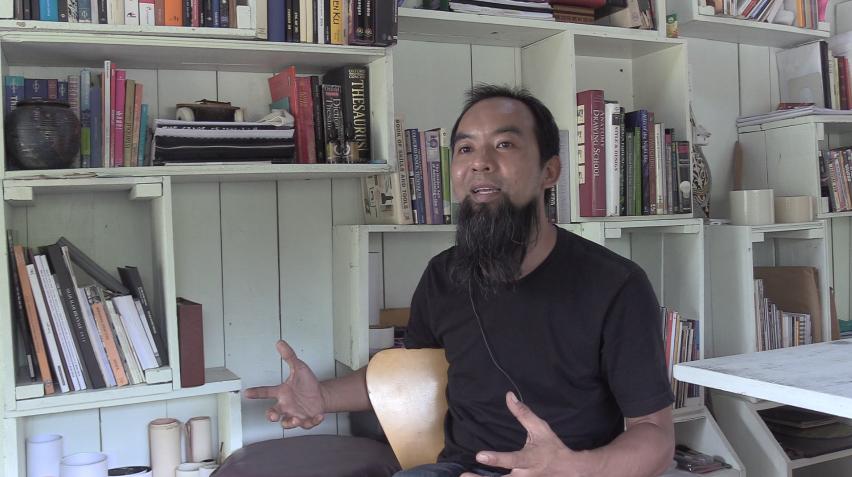
My third informant of the week was Mr. Shahrul Jamidi, a visual artist whose works deal with traditional forms of “Islamic art”, concepts in Islam, and issues related to Islam in society. He holds a BA in fine arts and an MA in Islamic thought and civilizations. Mr. Jamili grew up in what he described to me as a “sober” Muslim family highly conscious of Islamic values. During his childhood, he’d attend an afternoon religious school on top of his general education. In high school he started getting into computer animation, but throughout his post-secondary studies he focused more on print making, sculpture, and photography. Although he’d been fairly vigilant about practicing religion throughout his youth, he started to slack in his religious obligations upon commencing his bachelors degree in the UK. This changed after one of his instructors encouraged him to delve deeper into Islamic arts after detecting potential traces of spiritual commentary in his photography work. Mr. Jamili started to research into Sufism primarily through the works of Rumi. He developed a keen interest in geometry as conceived in the Classical Muslim World especially after learning about the Ikhwān Al-Ṣafā (Brethren of Purity/Sincerity), a secret society that authored the Rasa’il Ikhwan al-Safa’ (Epistles of the Brethren of Purity), which comprised fifty-two treatises in mathematics, natural sciences, psychology, and theology. I was especially fascinated to hear from Mr. Jamili that engaging in geometrical exercises or art making requires one to be highly methodical and logical which were correllated with justness and virtuousness in the view of the “brethren”.
Visual art as a manipulation of geometry is thought to be one of if not the most ideal form of traditional Islamic visual art. Such art making is especially safe, because it eschews figurative depictions which are controversial in Islam due to a slew of hadiths such as the ones available at this link. Boiling things down from this slew of commentary, the hadith make mention of painters and sculptors being tasked with “breathing” life into the figurative artworks (human beings and non-plant lifeforms) that they create in their life time on the Day of Judgement, which they will obviously fail to accomplish due to their limitations as human beings. In other words, only God has the ability to imbue forms with life, and human beings ought to stop trying to “play” God with their artistic abilities. In other hadith, painters and sculptors are warned that there will be one being in Hell for each figurative drawing they make on Earth to torment them in Hell (i.e. 1000 paintings made on Earth = 1000 beings tormenting you in Hell). Other hadith make mention of angels being unwilling to visit homes of humans that house a statue or dog. In one hadith, the Prophet Muhamamd took down a curtain depicting a horse(s) mid-prayer because it distracted him during his prayer. Mr. Jamili also pointed me to the story of the people of Nuh (Noah), who erected statues of virtuous people to serve as examples and reminders of virtue, which led to shirk (idolatry) among future generations who were led astray by Iblis (Satan) who told the people that their ancestors used to worship such statues in order to invite rain, which was verily untrue.
Though Mr. Jamili believes that some of the finer points in these hadith are up for working out in greater detail and interpretation, he mostly shies away from figurative depictions in his artwork. He told me that one of the only times in his recent memory that he included a face in his artwork was his own face imprinted on a metal coin which was meant to convey a particular political/societal message. Even so, Mr. Jamili holds that what others may perceive as a limitation in art has actually opened up a world of creative opportunities for him, which I wholly agree with.
Razin
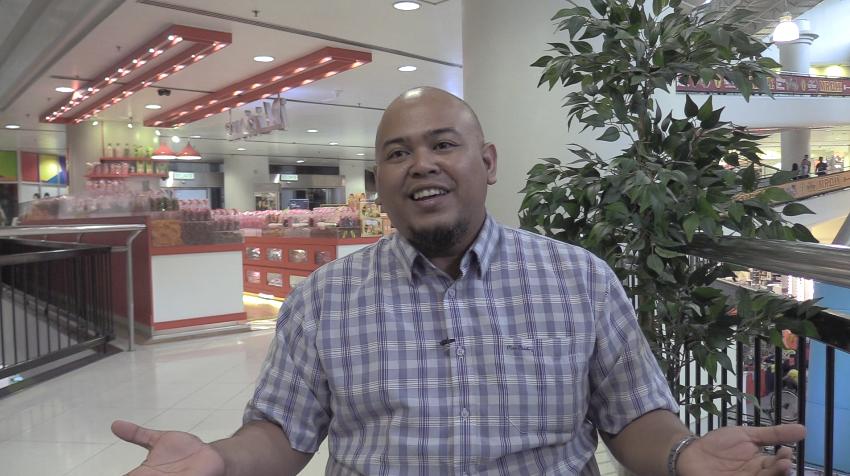
My fourth informant this week was Muhamad Razin bin Che Mud (aka. Tok Jeng). Tok Jeng told me that he was born into a “simple Muslim family”, a good number of whom sung and danced regularly for recreational purposes. As one of Tok Jeng’s grandfathers was from Yemen, zapin dance factored into the musical mix to be found in their household growing up. Surrounded by music making from a young age, Tok Jeng started to participate in singing competitions as early as 10 years old for inter-school as well as inter-state competitions. His interests in music began to shift from pop music to more traditional forms such as dhikr barat (see example here) from his secondary schooling years until when he was in his second year of his diploma in information management (i.e. library sciences) at UITM Shah Alam. In the third year of his post-secondary studies (i.e. the 1st year of his MBA degree program at the same university), Tok Jeng’s musical interests shifted once again from dikir barat to nasyeed music. A year later, he was given a chance to pursue a career in the nasyeed music industry by the well-esteemed group Hijaz. Since then he’s put out three studio albums of his own, and he continues to write and produce songs for local artists at his studio in Shah Alam.
Before delving into the religious implications of nasyeed, it behooved Tok Jeng to offer a definition of nasyeed. In his opinion, the lyrical content of a given song must meet at least one of the following three requirements to qualify as nasyeed:
- Lyrical content is taken directly from the Quran/Hadith or is at least commentary on such content.
- Lyrical content addresses key Islamic figures or deals with Islamic history.
- Lyrical content promotes the good things and values in Islam.
Notice that Tok Jeng did not make any prescriptions for melody, harmony, rhythm, or instrumentation in his definition of nasyeed. In other words, musical genre considerations are absent in the classification of nasyeed music in Tok Jeng’s scheme of the industry. This open-mindedness with regards to musical genre in nasyeed, however, did not accompany nasyeed music making in Malaysia from its inception. Tok Jeng told me that in the aftermath of the Islamic revolution in Iran in 1979, the earliest nasyeed music produced in Malaysia in the ’80s only featured voices, paritally due to the conservative atmosphere invited by that religio-political development in the Muslim world. By the late 80’s and early 90’s, the daf (frame drum) and other percussion instruments were starting to make their way into popular nasyeed tracks. By the early 2000’s until now, nasyeed artists have appropriated musical instruments and styles from around the world to produce their money making hits.
Today, Tok Jeng emphasized that it’s more important for nasyeed artists to be good Muslims than commit to one musical genre over another or make use of one instrument over another in their tracks. In general, nasyeed music consumers perceive nasyeed artists as good Muslims, and if they were to learn otherwise about a well-known performer in the industry, it would not bode well for said performer. Especially when in the public eye, nasyeed artists thus make a point to pray when it’s time to pray and dress, behave, and speak in line with the shariah. Interestingly, these expectations are not held for non-Muslim nasyeed musicians and producers, of whom I hear there are quite a few. In fact, many of the earliest nasyeed albums were doctored in production houses run by non-Muslims due to their superior resources and the commercial expertise of those non-Muslims running these production houses. One can’t help but assume that such non-Muslims were largely motivated by potential profits in their production efforts of Islamic music. Non-Muslim singers of nasyeed today are welcomed by the larger Islamic community, and it goes without saying that they are not expected to be good Muslims. I assume they are still expected to be decent, well-behaved people nonetheless to gain a substantial amount of credibility and recognition for making nasyeed music in Malaysia. I couldn’t help but chuckle when Tok Jeng told me that non-Muslim kids throughout Malaysia often recite the shahadah when casually singing along to their favorite nasyeed tracks completely unaware that they would be converting themselves to Islam if only they recited these holy words with the proper religious conviction and intention. Some Malay nasyeed musicians have gone so far as to sing tracks in Tamil as opposed to Melayu in order to reach out to Malaysia’s Tamil speaking Hindu minority in an act of dakwah (religious propagation/preaching).
Tok Jeng currently serves as president of the organization Munsyid Malaysia (Malaysian Council for Nasheed Entrepreneurs), which is a non-profit NGO that seeks to raise the Malaysian nasyid music industry to an international standard that rivals the reputation and influence of the likes of K-Pop, J-Pop, etc. The organization mentors up and coming nasyeed groups on how to be relevant in a digital economy. They hold the groups registered with their organization to high standards of production, and they help strategize with such groups how best to export their music for consumption in the global halal music market. To this end, Tok Jeng also serves as co-founder and CEO of IslamicTunes which was originally an ecosystem for all sorts of halal digital media. Now, IslamicTunes is more tailored to just digital streaming for shariah compliant music from around the globe. The allegiance to keeping things wholly halal remains, unlike platforms like YouTube, where all sorts of questionable content lives. Indeed, even when Muslims think they are safe and sound watching a clip of Quranic recitation on YouTube, advertisements about sleazy websites and sleazy related videos suddenly bombard their laptop and mobile phone screens. IslamicTunes is an attempt to purge all that noise and only keep the wholesome fun in tact.
Wani Ardy
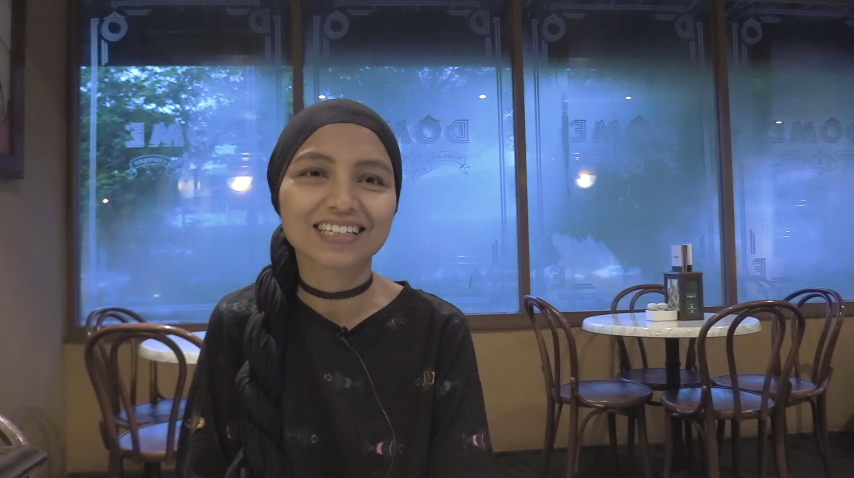
My fifth informant this week was Wani Ardy, a writer and singer-songwriter currently based in Ipoh in the state of Perak, Malaysia. Although her father was previously a multi-instrumentalist, he discouraged Wani from pursuing music from a young age, claiming that it was extraordinarily difficult for people to “make it” in the music industry. Her father was the disciplinarian of the household, pressuring her to start wearing the hijab at age 13 particularly for religious occasions. Both her parents were quite religious and had high expecations for her academics, which Wani unabashedly told me weren’t all that great during her primary and secondary schooling days except in the realms of the arts. Wani struggled mostly with math and sciences, but she also failed to reach khatam quran status (an achievement marking one’s completion of reading the quran) during her early religious education. When she really started getting into music, she told me that she had to practice guitar playing in secret, even though her elder brother had free reign to play guitar openly, which she holds to have been a glaring double standard. Dissuading her from majoring in music in college, Wani’s father influenced her decision to instead pursue “performing arts”, screenwriting, and screen arts, for which she graduated with first-class honors. It was while in college, then, that she started getting into theater, film, dance, costuming, and more. At this point, Wani’s parents gave up on their wishes for her to pursue a professional field outside of the arts. Wani started performing in public at the age of 18 and became especially visible while completing her diploma at UITM, performing secretly without her hijab on at various local venues. Things became prickly between Wani and her father after he discovered some of these performances on YouTube at age 20.
Things started to change for Wani and her relationship with spirituality and God after moving to Sydney, Australia in order to complete her postgraduate degree in creative writing at Macquarie University. It was in Australia that Wani first experienced hate and discrimination based on her facial features and her voluntary choice to wear the hijab. Such prejudice inspired Wani to turn more towards understanding and embracing the religion she grew up with, i.e. Islam. While abroad, she no longer enjoyed the privileges held by Malay Muslims in Malaysia, which many Malay Malaysians have described to me as being analagous to white privilege in the United States. From their characterizations, it seems to me that government afforded advantages for Malays is even more endemic than what exists (if any at all at the institutional level today in the US) for White Americans. Ironically, in a context in which it was hardest for her to practice her religion, Wani became that much more committed to spirituality. Upon first embracing the hijab out of her own will after years of shirking her “religious obligation”, Wani shared with me that she did not quite see the lifestyle change associated with observing hijab coming. Though outsiders may not realize it, the hijab is more than just a piece of cloth that covers one’s hair. Theoretically, it is one’s commitment to modesty and upholding one’s dignity. Some hijabis (women who wear the hijab) interpret this commitment in part as restricting one’s physical interactions with non-Mahram men. Wani thus found herself, among other changes, having to think twice before casually hugging old male friends of hers back in Malaysia. Much to her chagrin, after arriving back to the Malaysian music scene with her newfound commitment to spirituality in her personal life, she found herself being criticized by skeptics and continually typecast as an emulator of the popular Malaysian artist, Yuna, who is widely known for also wearing the hijab during her musical performances. Wani told me that she hopes and prays that more people would care less about “what’s on her head and more about what’s in her head.” Indeed, Wani bemoaned the disproportionate amount of scrutiny that female Muslim artists face being in the public eye as compared with male Muslim artists, limiting women’s freedom to express themselves on stage to the extent that men are able to do so. Muslim women carry an especially heavy burden of “preserving their dignity and honor” in life, which can translate to various phenomena on stage: less bodily exposure, less body movements, less expressiveness vocally or musically, and more. Nonetheless, more and more hijabis are becoming performing artists in Malaysia, and all of them come from differing backgrounds with differing commitments to spirituality and differing motivations to make art.
Syed Abdul Rahman Alhadad
My final interviewee this week was Syed Abdul Rahman Alhadad, founder of the dakwah NGO HAK. Aside from overseeing talks and other events put on by HAK on an almost daily basis, Mr. Alhadad is a regular speaker for a variety for Islamic talk series in Kuala Lumpur. He makes it a point to bring his speaker series on subjects such as “The Book of Assistance” by Imam Al Haddad (renewer of the of the 12th century AH) to as many venues around Kuala Lumpur as possible, be it cafes or Islamic centers. Hysterically, before we started our interview, I learned that Mr. Alhadad is the father of the famous Malaysian rapper, Altimet, who I had interviewed only just a week or so prior to my interview with Mr. Alhadad. This coincidence became one of the larger points of our discussion. In short, Mr. Alhadad still has a difficult time reconciling his religious principles as an adherant of the Ba’Alawiyya Sufi order with the fact that his son is a mainstream rapper who does not limit his lyrics to solely Islamic themes and makes use of a variety of instruments and production techniques in his music. I mention these two points in particular because even the most skeptical Muslims when it comes to music are generally okay with vocalization and percussive accompaniment for the sake of performing religious music. As with many other especially traditionalist or conservative Muslims I’ve met with, Mr. Alhadad’s hesitation in supporting his son’s music career extends beyond the purely theological points that underpin such selectivity when it comes to music making. In fact, it’s become clearer and clearer to me that the crux of traditionalist and conservative Muslims’ worries regarding music making lies in the culture of music making, stereotypical tendency of musicians to live hedonistic, dishonorable/immodest, nonconformist, and undisciplined lifestyles, and the lack of financial security in the music industry for the vast majority of people who dare to make a living out of making music. In other words, it seems to me that traditionalist and conservative Muslims’ primary concerns regarding making it in the music industry are analagous to the concerns of parents and people in general, Muslims or non-Muslims alike. In my experience, the majority of such Muslims acknowledge that it is possible to be a good Muslim and still make music especially if such music is explicitly religious. However, these Muslims fear that the potential for artists to become corrupted and led astray from the potentially wholesome path of making art and still being a good Muslim is, unfortunately, quite high. Unlike non-Muslims, of course, these Muslims also must reconcile the seemingly anti-music stance that the Quran and the Hadith put forth, when in fact both these texts send heavily mixed messages, which at the end of the day are interpreted by various ulama (Islamic scholars) one way or another. Given this lack of clarity, for the average Muslim, it really just comes down to placing your bets with your preferred credible authority(-ies) on the matter, and either listen to and/or make music or not.
As a follower of Ba’Alawiyya Sufism, Mr. Alhadad is among the camp of traditionalist Muslims who believe that limiting the pursuit of entertainment in life is better than not. Mr. Alhadad further qualified his convictions by describing to me a mainstay of Ba’Alawiyya Sufi philosophy, which gave me the sense that committed Ba’Alawiyya Sufis are theoretically a bit more pious than your average Muslim. Ba’Alawiyya Sufis inject a bit of steroids into the five levels of action in Islamic jurisprudence to ensure the safest, quickest, and easiest path to connect with God here and in the hereafter. I’ve covered this in previous posts, but in short, Islamic jurisprudence recognizes the following five levels (I’ve simplified the terminology and their implications here) of human action (al-ahkam al-khamsa) characterized by varying degrees of desirability that have varying implications in the economy of divine rewards for individual Muslims:
- Wajib: obligatory -> receive reward for doing; receive sin for avoiding (i.e. 5 prayers)
- Sunnah: recommended -> receive reward for doing; receive nothing for avoiding (extra prayer)
- Mubah: “neutral” (not exactly…)/permissible/doable -> receive nothing for doing; receive nothing for avoiding (talking, eating, sleeping, laughing)
- Makruh: disliked/hated -> receive nothing for doing; receive reward for avoiding (swearing)
- Haram: forbidden -> receive sin for doing; receive reward for avoiding (eating pork)
To demonstrate just how serious Mr. Alhadad and other Ba’Alawai Sufis are about doing that which is wajib and avoiding all things haram, Mr. Alhadad related a concept within usul al-fiqh that entails an extension of the “wajibness” or “haramness” of a given thing or action down the causal chain of materials and/or events that give rise to the wajib or haram thing or action at hand. I should emphasize that this concept is a theory and functions more as an ideal. Basically, since we know for certain that zina (fornication and adultery) are haram, one ought to analyze a potential chain or potential chains of events that may lead to fornication and adultery and subsequently avoid each link in this chain as if each of the links were haram in and of themselves. Mr. Alhadad offered the following example:
- A man makes attempts to make eye contact with a woman.
- The woman repays that attempt, and they are now making eye contact.
- One of the two or both people smile at each other.
- The two start conversating.
- They schedule a date with each other to meet up in the future.
- BAM -> next thing you know, the two individuals are committing adulter or fornicating.
Analyzing the causal chain leading to zina takes us to the very first thing that the woman and man in our example did with each other: make eye contact. Rather obviously, it follows that if unmarried men and women made a conscious effort to avoid making eye contact with one another, there would be much less zina in the world. No one, including Mr. Alhadad, is saying that all unmarried men and women should quit looking at each other. Rather, this scheme serves as a reminder that Muslims ought to be more vigilant about avoiding links in causal chains that may lead to the realm of haram whenever possible or appropriate. A similar line of reasoning follows but in the opposite direction in the case of causal chains leading to a wajib thing or action. For example, given that the 5 daily prayers are wajib, one ought to make sure they do all the things needed to observe said prayers. If that means setting an alarm for 6:45 pm to get to the mosque for maghrib prayer (the 4th prayer of the day), you sure as hell better set that alarm. That is, setting that alarm, in this scheme, becomes wajib by extension. According to Mr. Alhadad, committed Ba’Alawai Sufi’s also tend to stick all things sunnah into the the realm of wajib and all things makruh into the realm of haram. This essentially leads to a reduction of the five levels of human action and things in life into just three -> obligatory, permissible/neutral/doable, and forbidden. How Ba’Alawi Sufi’s deal with this middle category is particularly interesting. In their efforts to do what they should do and not do what they shouldn’t, doing things which are merely mubah (permissible/neutral/doable) are generally seen to be not the best use of time and energy in the framework of the divine economy of rewards. Thus, some Muslims, not limited to Ba’Alawi Sufi’s, consciously limit talking, laughing, smiling, eating, and sleeping in their lives among other things and actions in the mubah realm to the best of their abilities. I should emphasize that the average Muslim I’ve known in my day does not live their life according to this schema, but I just thought it was fascinating that there are indeed some that do rather consciously.
Sacred Path of Love: In Pursuit of Happiness
Alright, enough of interview noise and business. The rest of my week comprised two fun events: an Islamic conference dealing with a variety of topics such as love, happiness, gratefulness, mindfulness, grief, etc. The Islamic conference (SPOL), usually held in Singapore but held in Kuala Lumpur for the first time this year, was attended by about 150 people. I won’t be doing detailed commentary about each of the talks I witnessed, but one of the things that immediately struck me about the event was the fact that all of the six presenters and two performing artists invited were men, while about 75% of the audience members were women. During the Q&A session proceeding some of the presentations, serious cases of women facing domestic violence and sexual harassment came up multiple times, all of which were given decent answers by the entirely male panelists. I couldn’t help but imagine, however, that the women concerned could have possibly been better served if a couple of female Islamic scholars in addition to the male scholars could have spoken up about such issues at the event. Don’t get me wrong, male scholars are perfectly qualified to speak up about the legal ramifications of wife beating in the Quran, but in terms of offering advice to a wife experiencing such abuse, it seems to me that a woman or a wife in particular is better poised to offer advice or counsel on the matter or at least has a unique perspective to offer as compared with her male Islamic scholar peers. I put forth this concern of mine to one of the organizers of the events who told me that the organizers’ priority is bringing the most qualified speakers and performers to the SPOL conference, and if there simply aren’t any women speakers and performers willing or qualified to speak or perform for the event in a given year then so be it. I found it hard to believe that a single Muslim woman from around the world couldn’t possibly be qualified or willing to participate in the SPOL event, but I think that wasn’t exactly the issue that this organizer was pointing to. Sure enough, there are such Muslim women the world over, but I gathered that conferences such as SPOL don’t necessarily make it a point to ensure equal or nearly equal gender representation on stage as I’ve experienced in conferences and events dealing with other subjets in other contexts especially in the United States. I guess my point is that the default mode for many event organizers and employers in the United States is a celebration of diversity for diversity’s sake - a more diverse panel or a more divorce workforce is intrinsically better than a homogenous one in terms of gender, nationality, etc. Nonetheless, to the liberal US citizen’s delight, the panelists and performers at this SPOL conference represented an impressive blend of nationalities and ethnicities.
Nasyeed Vocal Competition Semi-Finals @ TV Alhijrah
My week ended on a high note at Alhijrah Big Studio, which is quite literally a really big studio run by TV Alhijrah, a government owned media corporation which is Malaysia’s first “free-to-air” Islamic and HD television station. The event took me by surprise on a number of levels. For one, it has become somewhat of a formula for nasyeed groups in Malaysia, at least in the context of this competition, to recite holy words in a traditional taranum style of Quranic recitation as preambles to subsequent presentations which are as “boyband” as it gets. A lead vocalist doing some Quranic recitation in a serious temperament somehow serves as a key to unlock the permissibility of the rest of a given vocal group to enter the spotlight and proceed to woo audience members with original lyrics on “Islamic” themes in largely pop, RnB, or hip-hop idioms to backing tracks full of strings, winds, and the whole shebang. The sound reinforcement and lighting for the event was no less stimulating than your average superstar celebrity concert in the US. My expectations were most meddled with by the only female group out of 10 contestants of the evening, who, for the record, were the best performers of the night in my opinion. The female duo featured some live guitar playing as opposed to the rest of the groups who utilized pre-recorded backing tracks, and one of the women, both in hijabs, started beatboxing in the middle of their set. I simply was not aware of the fact that the mainstream nasyeed industry has accepted beatboxing hijabis on stage. I raised this curiosity to Tok Jeng after the show, and he directed my attention to the importance of the internet in making what I had just witnessed possible in a remarkably short timespan. To put things blunt, people all around the world, including ultra-orthodox and highly traditionalist Muslims, are exposed to all sorts of obscenity and craziness on the internet all the time nowadays. Whereas beatboxing hijabi’s might have shocked a majority of conservative Muslims just ten years ago, such conservatives today are likely to have come across a hijabi beatboxer on YouTube some time in the past ten years before witnessing what I had just witnessed for the first time. Also, it goes without saying that the shock factor of hijabi beatboxers is much lower today when stacked up against the endless amount of internet porn and carnage one can find on YouTube in the form of pranks, accidents, and beheadings, stonings, and crucifixions (yes you read all of that right). The byproduct of all of these things detestable in their own rights, and this is just a theory really, is a much greater ability for Muslims to stomach all sorts of curious developments in the nasyeed music industry at a much more rapid pace than during the sans high speed internet era.
Tasty Treats in Kuala Lumpur: Pt. 4
FOOOOOOOOOOOOOOOOOOOOOOOOOOOOOOOD!
